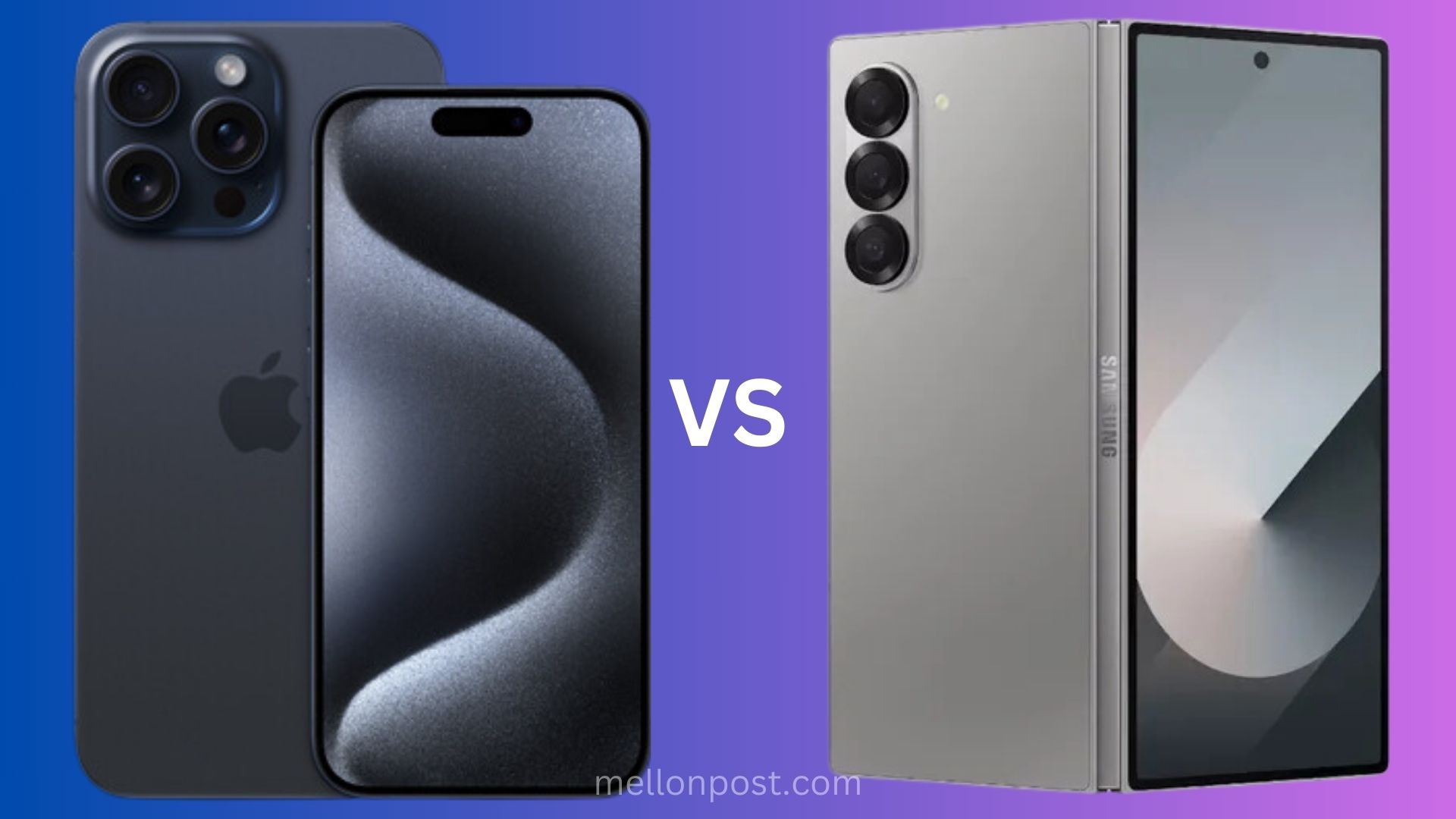
Comparison of iPhone vs Samsung
Table of Contents
A Comprehensive Comparison of iPhone vs Samsung Phones
The smartphone industry is dominated by two major players: Apple’s iPhone and Samsung’s Galaxy series. These brands have consistently set high standards in technology, design, and user experience.
In this article, we will explore the key differences and similarities between iPhones vs Samsung phones, focusing on their physical design, operating system (OS) design, apps, and pricing.
Physical Design of iPhone vs Samsung
Build Quality and Materials
iPhone
Apple has always prioritized premium materials and exceptional build quality. iPhones typically feature a combination of glass and aluminum or stainless steel. For instance, the iPhone 13 series showcases a ceramic shield front cover, which is touted as the toughest glass on any smartphone. The use of aerospace-grade aluminum or surgical-grade stainless steel in the frame ensures durability and a premium feel.
Samsung
Samsung also emphasizes high-quality materials in its flagship Galaxy S and Note series. The latest models, like the Galaxy S23 Ultra, use Gorilla Glass Victus on the front and back, with an aluminum or stainless steel frame. Samsung’s foldable devices, such as the Galaxy Z Fold and Z Flip, incorporate ultra-thin glass for flexibility and durability.
Design Philosophy
iPhone
Apple’s design philosophy is centered around simplicity and minimalism. iPhones often feature a symmetrical design with a clean front, devoid of physical buttons. The iconic notch, introduced with the iPhone X, houses the front camera and Face ID sensors. Apple’s commitment to uniformity is evident in its consistent use of design elements across generations.
Samsung
Samsung’s design philosophy is more varied, catering to a wider range of preferences. The Galaxy S series emphasizes a sleek, modern aesthetic with curved edges and minimal bezels, often utilizing an Infinity-O display with a small punch-hole camera. The Galaxy Note series, known for its S Pen integration, has a boxier design. Samsung’s foldable devices push the boundaries of design with their innovative form factors.
Display Technology
iPhone
Apple’s iPhones feature Super Retina XDR displays, which use OLED technology. These displays are known for their high resolution, vibrant colors, and excellent contrast ratios. Apple’s True Tone technology adjusts the display’s color temperature based on ambient lighting, enhancing visual comfort.
Samsung
Samsung is a pioneer in display technology, with its Dynamic AMOLED 2X screens leading the market. Samsung displays are renowned for their bright, vivid colors, deep blacks, and high dynamic range (HDR) support. The company’s expertise in display manufacturing gives it a competitive edge, with even higher refresh rates and better outdoor visibility.
Operating System (OS) Design of iPhone vs Samsung
User Interface (UI)
iPhone
iPhones run on iOS, Apple’s proprietary operating system. iOS is celebrated for its clean, intuitive interface and seamless user experience. The home screen consists of a grid of app icons, with customization options like widgets and app libraries introduced in recent versions. The control center provides quick access to essential settings, while Siri offers voice-assisted functionalities.
Samsung
Samsung phones run on Android, customized with Samsung’s One UI. One UI is designed to make large-screen devices easier to use, with elements brought closer to the bottom of the screen for easier reach. It offers extensive customization options, including themes, widgets, and edge panels. Samsung’s implementation of Android also integrates Bixby, its virtual assistant, along with Google Assistant.
Ecosystem Integration
iPhone
Apple’s ecosystem is one of its strongest selling points. iPhones seamlessly integrate with other Apple devices, such as the iPad, Mac, Apple Watch, and Apple TV. Features like Handoff, AirDrop, and Universal Clipboard enhance cross-device functionality. iCloud ensures that data, photos, and documents are synchronized across all devices.
Samsung
Samsung’s ecosystem has grown significantly, encompassing a range of devices like Galaxy tablets, wearables (Galaxy Watch), and smart home products. Samsung’s DeX mode allows users to connect their phones to monitors for a desktop-like experience. Integration with Windows through the “Your Phone” app facilitates seamless data transfer and notifications between Galaxy phones and Windows PCs.
Security and Privacy
iPhone
Apple places a strong emphasis on security and privacy. iPhones feature Face ID or Touch ID for biometric authentication. iOS is designed to minimize data collection and provide users with control over their privacy settings. Features like App Tracking Transparency and privacy nutrition labels inform users about how their data is used.
Samsung
Samsung also prioritizes security with features like Knox, a multi-layered security platform. Samsung devices offer biometric authentication through fingerprint sensors or facial recognition. One UI includes privacy controls and the ability to manage app permissions. Samsung’s Secure Folder provides an encrypted space for sensitive data and apps.
Apps and Software of iPhone vs Samsung
App Store vs. Google Play Store
iPhone
The Apple App Store is known for its stringent review process, ensuring that apps meet high standards of quality, security, and performance. This results in a more curated selection of apps, with fewer instances of malware. Developers often prioritize iOS for new app releases, sometimes offering exclusive features for iPhone users.
Samsung
Samsung phones access apps through the Google Play Store, which offers a vast selection of apps and games. While the Play Store has a more open submission process, it also means that users need to be cautious about downloading apps from unknown developers. Samsung also has its own Galaxy Store, providing exclusive apps and features for Galaxy devices.
Pre-installed Software
iPhone
iPhones come with a suite of pre-installed apps designed by Apple, such as Safari, Mail, Messages, and Photos. These apps are tightly integrated with iOS, offering a cohesive user experience. Apple’s productivity suite, including Pages, Numbers, and Keynote, is also available for free.
Samsung
Samsung phones come with a mix of Google apps and Samsung’s own apps, like Samsung Internet, Samsung Notes, and Samsung Health. While this offers more choices, it can sometimes lead to duplication of functionality. Samsung’s software also includes unique features like Edge Panels and the S Pen suite on Note devices.
Software Updates
iPhone
Apple’s control over both hardware and software allows it to provide timely and consistent updates. iPhones receive iOS updates simultaneously, ensuring all users have access to the latest features and security patches. Apple typically supports devices for around five years, extending the longevity of its products.
Samsung
Samsung has improved its update policy, promising up to four years of major Android updates and five years of security updates for its flagship devices. However, updates may be staggered, with different regions and carriers receiving updates at different times. Samsung’s commitment to longer support periods is a significant step forward in the Android ecosystem.
Pricing
iPhone
Apple positions its iPhones as premium products, with prices reflecting their high-end design and features. The base models of the latest iPhone series often start around $699 to $799, with Pro models exceeding $999. Storage capacity options also influence pricing, with higher capacities adding significant cost. Apple also offers older models at reduced prices, providing entry points for budget-conscious consumers.
Samsung
Samsung’s pricing strategy is more diverse, catering to a broader audience. The flagship Galaxy S and Note series are priced comparably to iPhones, starting around $799 and exceeding $1,200 for high-end models.
Samsung’s A series offers mid-range options, typically priced between $300 and $600. The M series and entry-level models cater to budget users, often priced below $300. Samsung’s foldable devices, like the Galaxy Z Fold and Z Flip, command premium prices due to their innovative technology, often starting around $1,500.
Additional Features
Camera Technology
iPhone
Apple is known for its consistent camera quality across iPhone models. The latest iPhones feature advanced computational photography techniques, such as Smart HDR, Deep Fusion, and Night Mode. The Pro models include additional features like ProRAW, LiDAR scanner for improved AR experiences, and telephoto lenses for enhanced zoom capabilities.
Samsung
Samsung’s camera technology is often more experimental, offering features like high megapixel sensors (up to 108MP), Space Zoom (up to 100x zoom), and Single Take mode, which captures multiple types of media with one shot. Samsung’s Ultra series typically includes multiple lenses, including ultra-wide, telephoto, and periscope lenses, providing versatile photography options.
Battery Life and Charging Between iPhone vs Samsung
iPhone
Apple focuses on optimizing battery life through hardware and software integration. iPhones generally offer reliable battery performance, with newer models lasting a full day on a single charge. Apple’s MagSafe technology offers convenient wireless charging and accessories. Fast charging is supported via Lightning cable, but the charger must be purchased separately.
Samsung
Samsung offers larger batteries in its devices, particularly in the Ultra and Note series. This often results in longer battery life, especially with adaptive power-saving features in One UI. Samsung supports fast charging, wireless charging, and reverse wireless charging, allowing users to charge other devices with their phone. Chargers are typically included in the box, though this is changing with newer models.
Additional Innovations
iPhone
Apple continues to innovate with features like Face ID, which offers secure facial recognition, and the introduction of MagSafe accessories. Apple’s focus on AR is evident with the inclusion of the LiDAR scanner, enhancing AR applications and photography.
Samsung
Samsung is at the forefront of foldable technology, with devices like the Galaxy Z Fold and Z Flip showcasing innovative design and engineering. Samsung’s S Pen, originally exclusive to the Note series, is now available on other devices, offering enhanced productivity features. Samsung also explores new form factors and technologies, such as the under-display camera in the Galaxy Z Fold.
Conclusion
In summary, both iPhones and Samsung phones offer exceptional quality, but they cater to different user preferences and needs. iPhones are known for their premium build, seamless ecosystem integration, and consistent software experience. Samsung phones provide
Continue reading: Tesla Optimus Gen 2: Everything explained

